Seksound: Indie-Rock's Alive and Well in Estonia
reviewed by dave heaton
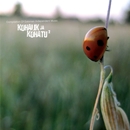
I don’t know much about Estonia – I’ll confess that I had to look it up in a world atlas. But I do know about rock and pop music, enough to know that there’s something serious going on these days in Estonia, judging by the Estonian independent label Seksound’s 2007 releases. In January they released a compilation that gives an excellent survey of current Estonian indie-rock/pop bands, with including those on the label and some others. It’s titled Kohalik ja Kohatu 2. Volume 1 came out in 2005, which shows I’m a bit behind the times, I suppose. In any case, this second volume is packed with bands new to me, bands in the general vein of ’90s UK/US indie-rock, but each with their own twist on the style.
The minute-long instrumental opening track, “Ulig” by Fein Ruks & the Metallophon, sets a dreamy tone, which gives way nicely into sharp guitar rock from the band Ans.Andur. Their “Parklate Linn” is sweetly melodic, with the guitars getting more and more aggressive as the song moves forward. After that a band called the Dildos’ brings a creepy vibe, though their song (“Nice Room”) does still end with the question, “isn’t it good to be alive?” I just can’t tell what their answer would be, and I like it that way.
The rest of the collection brings a variety of styles, each attractive in its own way. Orelipoiss bring punk energy to what could be night-time lounge music, or folk even, depending on the angle you look at it. Popidiot’s style of electro-pop has a DIY raggedness to it on “Hey Girl!”. They make the line “it’s OK to cry” sound ballsy. Erro’s “Koju” starts with the hand-clap-heavy happy indie-pop thing but gets weirder, twisting through feedback and steely synths (not an oxymoron, it turns out). Vaiko Eplik Ja Eliit’s guitars evoke Ride during “November”, while Pia Fraus give a My Bloody Valentine-ish sheen to “Yenissey”. Picnic’s “Who Do You Love” creates a hushed dream-state, while Jakob Juhkam offers atmospheric piano that seems like improv. All in all, a well-rounded collection, with no weak spots, spotlighting 18 bands/musicians each taking relatively familiar styles (though what isn’t, these days?) and refreshing them.
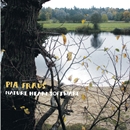
Five of the bands featured on the compilation have recent albums out that are just as exciting. It’s fun to hear one song by a band and dig what they’re doing, but an album gives a more substantial sense of what they’re all about. Pia Fraus’ album Nature Heart Software has the same style as the song on the comp, but it’s elaborated on. There’s no escaping the MBY comparison, but they put their own mark on it; they take some essence of that classic band (the mystery) and twist it a bit. Opener “Birds Still Swing” has a thick, almost angry electronics base, which singer Eve Komp’s voice hovering just above, doing her best about-to-disappear impression. Later they slow things down a bit more, but without losing the electric charge. I have no idea what Komp is singing about – though titles include “Thank You Peter Parker” and “You Know There Are People Living in the Country” – but the song title that sums up the album best to me is “Feeling Is New”. The music feels new even when it doesn’t.
Honey Power is a four-piece with the basic pop/rock set-up: vocals, guitars, bass, drums and keyboards. But they play especially tight throughout their album Macrosilly. Their style of pop-rock comes across as slightly unhinged, with also like a freight train, with urgency. There’s a Sonic Youth-ish side to the guitars and some post-punk in the vocals, but at the same time they’re very pop, very melodic. Often their songs fall in a Wedding Present sort of vein, but then there’s a song like “Audiovaras”, which is slow, moody and thoughtful.
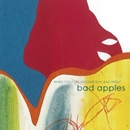
Another DIY pop/rock band with an appealing approach is Bad Apples. Their music always sounds a bit off/kilter and primitive, but they also have an erudite side, filling their lyrics with witty, playful or surreal observations about the world. Their album When Colours Become Day and Night opens with a male/female duet about parks being closed because of rain. “Collage” seems as the title indicates, moving from a jazzy, drifting little pop song about politicians to one about love, to one about chocolate rivers and marshmallow skies. “Ultravixen” starts as a mess, like children singing punk rock, and then gets sedate/dreamy (“psychedelic”) for a while after that. Later they turn a poem into a rock opera for “Jesus 1970”. They’re a colorful band – with their music I often feel like I’ve wandered into a painting.
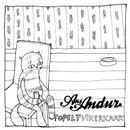
Nothing against the others, but the band whose music is filled with the most surprises is Ans.Andur. The cover art for their Topeltvikerkaar album is black-and-white, but there’s a colored pencil waiting for you in the CD case’s spine. No need for it with the music, though; it doesn’t lack for color. Witness the start, “Idiootide”: a Steely Dan-ish jazz-tinged pop number, bright as a sunny day and upbeat as can be, with keyboards, horns and joyous harmonizing. The album settles into a sleek pop-rock groove, but actually settles is totally the wrong word, because they’re constantly shaking things up. On “Parklate Linn”, the guitars ring out a little more, in that pleasantly fuzzy ‘90s indie-rock way. On “Plaane Pole” the guitars are in tuneful mode, as is the whole band. “Tallinn” gets more into a rhythmic groove of the zoning-out variety, but then also rocks it up a level and brings the horns back in. “Pidu” shows they can take the same formula even further. On the whole, Ans.Andur’s music is explosive and pop in equal turns, and effective at both. They’re a versatile, exciting young band, always keeping us alert and ready for more.
Another interesting release – among the most interesting, certainly – is the 2-CD collection from Kago, aka Lauri Sommer. Originally released on two separate CD-Rs, the music is self-recorded, but the sound is fairly crisp, not “lo-fi” in any extreme way. The first disc, Piimaš, starts out with guitar-playing that suggests Nick Drake, but that’s only one side of Kago. There is lonely but driven minimalist folk-ish music in that vein – often with guitar, and eventually with vocals too, but also sometimes with piano. But then there’s songs like “Silmad” or “Harold ja Maude”, where he plays and sings in a warped way. Both songs have catchy melodies, but strange, the vocals like Twin Peaks backwards talk, but not really. Like a funhouse mirror maybe, but not really. A later series of songs, including “Jerry Blake” and “Salaja Halb”, have a punk-rock “let’s fuck this up” spirit. “Vilex” finds Sommer whistling over guitar, like a cowboy. “Kyll syda teab” is perfectly melancholy, introspective. In “Meelika” he plays piano in a sad, wistful way that also seems hopeful. And it just keeps changing from there, but all somehow holding together as one sound. For “Hobune kadunud” and “Itk isale” Kago is apparently singing old Estonian folk songs, in an ancient, chanting style. The final two tracks -- “Karula Allee” and “Kohtumine” –almost resemble classical music, but also music box lullabies. The trajectory of those tunes gives them real impact, and that’s true of the album as a whole, too.
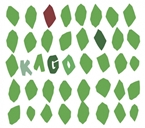
The second disc, Köngerjönks, is in the same vein, though possibly sadder overall. Kago starts out with moody, strange, atmosphere, and soon is mixing together these humble, old folk songs with more enigmatic, abstract, open-ended pieces of music. “Gjuu tandem” is an ambient mood piece that makes me feel haunted, every time, while “El maq kulda…” is a traditional folk song, its title translated in English as “I’m too good to stay here”. Often this ground between tradition and experimentation is blurred. Across the CD is scattered an exciting collection of sounds. “V+R” has flute; on “Pärast raudteed” the guitar circles like moonbeams; the title of “Baakanna” is growled wildly by Sommer. He took the name Kago after a Kurt Vonnegut character, according to his website, which also notes that the word means “travelling chair” in older Japanese. Both of those derivations seem appropriate; on record Kago seems a travelling mystery, conjuring up spirits but also intelligent songwriting combinations. Along with the rest of this Seksound crowd, his is music the world would benefit from paying attention to.
Copyright (c) 2007 erasing clouds |
|